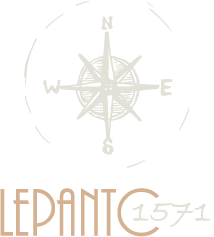The historical significance of the Battle of Lepanto in the 16th century as well as the vast size of the opposing fleets have been an inspiration not only to the arts and literature, but – among others- to scientific research. Like similar conflicts throughout Greek history gave rise to conduct underwater surveys (see the underwater research at the straits of Salamis since 1884 under Ch.Tsountas), thus happened in the case of Nafpaktos, where the great documented conflict seemed that took place.

Underwater research
The first underwater archaeological survey conducted in 1971 led by P.Throckmorton (co-founder of the Hellenic Institute of Marine Archaeology), H.Edgerton and El.Gialouri. It was the first time in Greece that the technology of sonar systems appropriately modified for archaeological purposes were applied by H. Edgerton. The overall five expeditions that took place between 1971 and 1972 had been aiming to identify shipwrecks, particularly those of 16th century ships participating in the Battle of Lepanto. The results of this research carried out in depths of about 50 meters, proved to be below expectations. While the researchers managed to locate several 'targets' (potential shipwrecks), the morphology and composition of the seabed, however, significantly had been altered by the continuous embankments of the river Achelous which possibly covered any of the archaeological remains. It was not earlier than 2002 when the second archaeological survey organized in the vast territory between Messologi and the Oxia Island. For the purposes of a documentary dedicated to the Battle of Lepanto (1571) organized by the German channel Spiegel TV, scientists and specialized divers went on an extensive archaeological survey. In this research, the assembled scientists applied modern mapping technologies in order to locate and identify underwater antiquities while being accompanied by specialized deep-divers. Surveys once again failed to meet expectations. However, at a depth of about -10 m. a wooden vessel was found, of approximately 30 m. long which however has been dated in the middle 19th century.
The dynamic geomorphological setting of the seabed of Patras Gulf and off the coast of Nafpaktos which proved to be a substantial obstacle in identifying underwater antiquities was the object of the following –third- survey. Conducted in 2006 by the Department of Geology, University of Patras under the direction of G. Papatheodorou, this geological research yielded a series of interesting findings in relation to the remains of the Battle. Within the Battle’s proposed territories, the university's sonar detected a number of individual formations composed of solid layers of sand. The latter seemed more likely to have been created by the reaction of potential shipwrecks with the continuous layers of incoming sand from Acheloos river. According to the researchers it is a solid case that beneath those layers lie a number of naturally preserved shipwrecks of the Battle of Lepanto. A detailed account about these expeditions can be found in the blog "The Unknown Patraic Gulf", with lots of information about the region throughout time (see Webliography).
